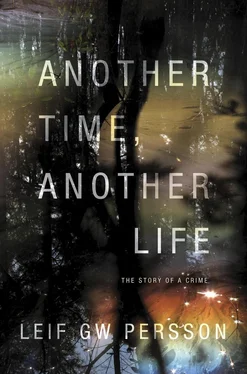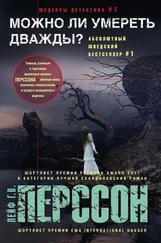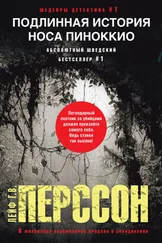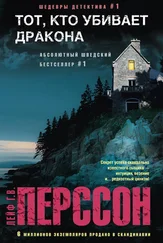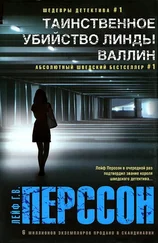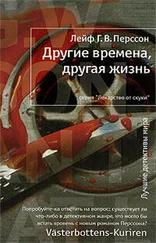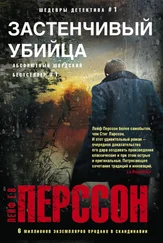“Personally I’ve known about Rosewood since the early nineties,” said Berg, “and the first time I got information from the Americans that they had gathered out of the Rosewood data was in 1993.”
“That was nice of them,” said Johansson, who at one of the courses he had attended had heard that not even the German security service was allowed access to the Rosewood material until the Germans agreed to trade information they had gathered from SIRA, which, according to the same source, would have been only a few years ago.
“Oh well,” said Berg dryly. “The first time for me was 1993, and I had a little something to trade for, so it was not purely altruistic impulses that drove them to share the information.”
Trade in the information from the SIRA archive had, according to Berg, first begun a few years later, but the commerce had accelerated toward the end of the nineties, and this applied to both Rosewood and SIRA.
“And this is when it gets interesting in relation to the occupation of the West German embassy in April 1975,” said Berg, looking shrewd. “Really interesting,” he said.
“I’m listening,” said Johansson.
In 1993, Berg, mostly out of curiosity, he maintained, had traded for information from Rosewood about Swedish involvement in the West German embassy drama. After analysis that information appeared simple and unambiguous. The Swedish connection consisted of four names. In alphabetical order by surname, Eriksson, Stein, Tischler, and Welander. But naturally there was not a peep about what their involvement consisted of.
“According to the Stasi, it was these four who had helped the terrorists at the embassy,” stated Berg. “But how they knew is mere speculation, and as I’m sure you already know I have a somewhat more nuanced view of the issue.”
“Welander and Eriksson, to some degree Tischler, but in any case not Stein,” said Johansson.
“Just about,” Berg agreed. “Two who were active, one who was unwitting, and one who was exploited.”
It only began to get really interesting when Berg compared corresponding information from the SIRA archive he came across a few years later. If the information in Rosewood was assumed to be reliable — and according to Berg there wasn’t the slightest room for doubt on that point — these four should also be found in the SIRA archive, in the best case with an accompanying description of what their efforts had actually consisted of. It was highly interesting, not least to Berg because it gave him a convenient opportunity to assess his own analytical acumen in retrospect.
“You’ve surely figured out the answer already,” said Berg, looking at Johansson.
“None of them were there,” said Johansson. Easy as pie, he thought.
“Exactly,” said Berg, nodding. “None of them was there. Not a comma about any of them, and that was pretty strange, because there were a number of reasons, beyond what had happened at the West German embassy, that at least Welander’s name should have been there. Eriksson’s too for that matter. When my predecessors recruited him, they made a serious mistake.”
Oh well, thought Johansson. It’s probably not Eriksson and his recruitment that’s eating you up inside.
To put it briefly, SIRA was not to be relied on, and someone who had contributed to that circumstance was the now deceased doctor of philosophy and associate professor of sociology at the University of Stockholm, later an employee at Swedish Television, Sten Welander. And in all probability his best friend from childhood, the banker Theo Tischler, had given him the money he needed to carry out the necessary erasures in the original database of the SIRA archive.
“Perhaps you’ll have some coffee after all?” said Berg, looking inquiringly at Johansson. “This is not a bad story, but it does take awhile to tell it.”
“Yes,” said Johansson. “Maybe it’s time for a cup.” Although a Danish is probably out of the question, he thought.
On Friday the eighth of December 1989, Sten Welander traveled to East Berlin, together with a photographer and a colleague from Swedish Television, to do a feature story on the immediate consequences of the East German collapse and the fall of the Wall. This was an idea that had been in the works throughout that autumn and pursuing the story would have been extremely timely on the evening of the ninth of November. There had been a number of meetings, considerable bickering had broken out on the editorial staff, and several younger colleagues — of which Welander was only one — had felt called to immediately go to East Berlin.
The fact that Welander was finally the one sent off on the first round was owing to his being able to present a proposal for a very specific, and, in terms of content, sensational and disturbing program on the East German security service, the Stasi, which until then had held the population of East Germany in an iron grip. According to Welander, the Stasi had files on millions of East German citizens, had persecuted hundreds of thousands of them, had locked up tens of thousands in prisons and mental hospitals, and, with the utmost secrecy, had had hundreds executed. In addition, Welander had evidently developed contacts with dissidents and persecuted East Germans who could testify to their misery and — as icing on the cake — people from the Stasi who had already promised to come forward and let themselves be interviewed. In brief, the proposed coverage was almost too good to be true.
In the wake of management’s consent and the curses of some of his colleagues, Welander and his little team got on the plane and flew to Berlin. What they didn’t know was that on the same plane were people from both SePo and the Swedish military intelligence service, or that for the past twenty-four hours SePo had been listening in on his and Tischler’s home phones, and that people had even been assigned to shadow Tischler on his ever more restless walks between his apartment on Strandvägen, the office down on Nybroplan, and the central city’s finer restaurants.
When Welander arrived in Berlin, he immediately snuck out of the hotel and met his Stasi contact at a nearby beer hall in West Berlin, a captain by the name of Dietmar Rühl who had never been involved with operational activities, since his area was administrative issues and personnel matters. The surveillance of Welander and the contacts he made had been taken over by the local division of the West German secret police as soon as they landed, and as a friendly gesture their Swedish colleagues had been allowed to follow along.
Welander and his East German Stasi contact appeared noticeably stressed, almost harried, and from time to time they acted as though they were playing in some old spy film from the days of the cold war. They sat with their heads close together at the back of the place and palavered for more than an hour before they got up, shook hands, and left a few minutes apart. Rühl was seen to be carrying a thick brown envelope, contents unknown, and walked quickly back to East Berlin. A relieved Welander snuck back to his hotel. The whole meeting was well documented with photos taken by BKA’s counterespionage department.
During the next few days Welander met with Rühl a few more times in East Berlin. Welander seemed to have more or less foisted the TV reporting onto his two colleagues. On the third evening a shouting match erupted between him and the other two in the photographer’s hotel room, whereupon Welander excused himself by saying that his contact at the Stasi had demanded to meet him alone, a necessary condition for his cooperation. The editorial discord that broke out at the hotel was of course recorded on BKA’s surveillance tape.
During the next two days the hatchet got buried. The photographer and Welander’s colleague interviewed happy East Germans who willingly let themselves be filmed while they cursed at more or less everyone who had previously cast a pall over their lives — from Erich Honecker and his Stasi to the concierge in the building where they lived, who was “ein Arschloch und Polizeispion,” to the next-door neighbor who was an ordinary “Polizistenschwein und Petze.” In brief, things went well for Welander’s colleagues.
Читать дальше
